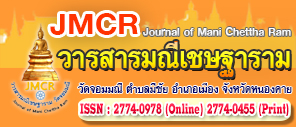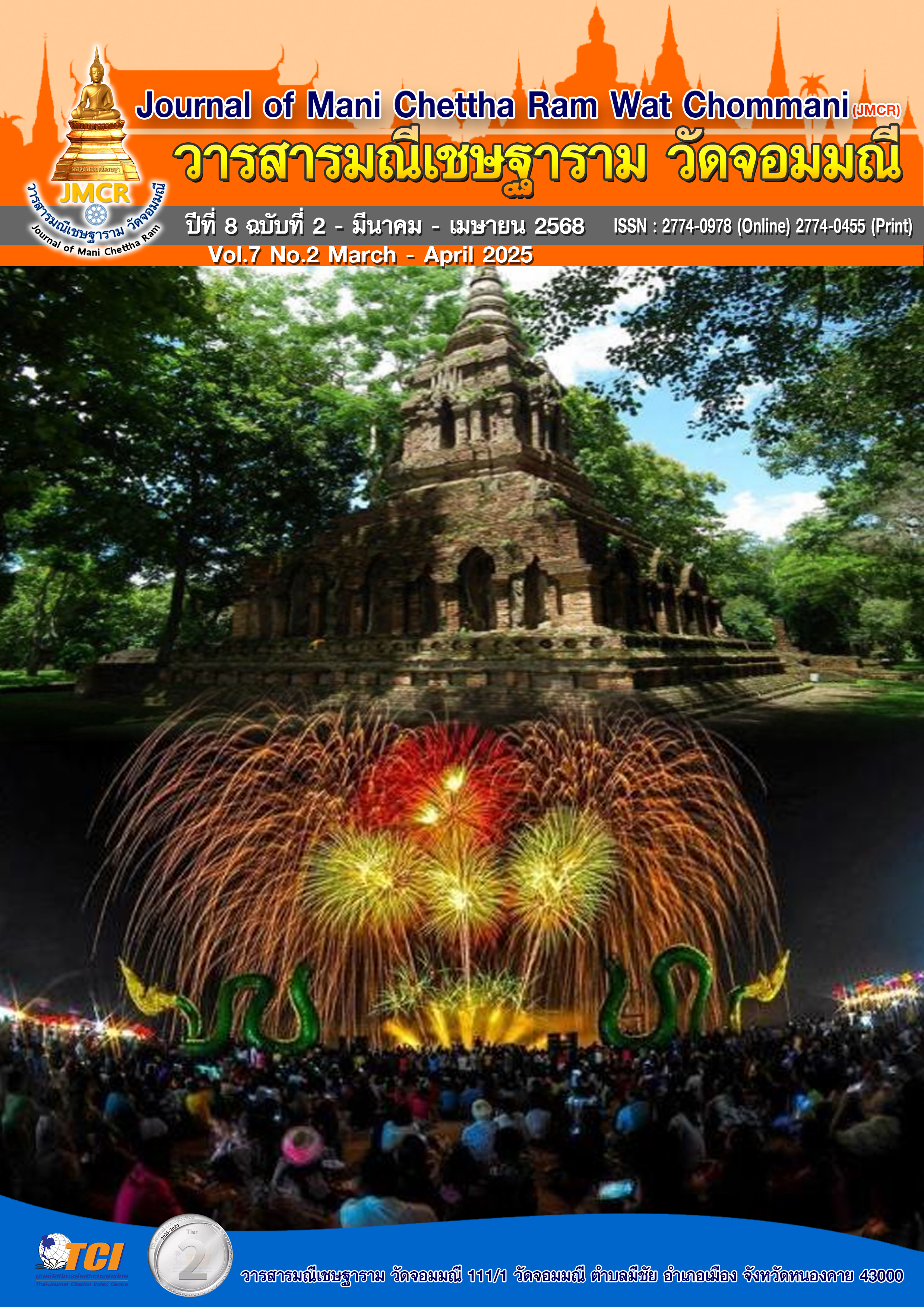COMMUNICATION COMPETENCE FOR DEVELOPMENT OF LOCAL ADMINISTRATORS
Keywords:
Competency, Communication, Development, Local AdministratorsAbstract
Communication is an important part of life and society. It plays an important role in conveying and exchanging ideas, feelings, needs, and seeking information to support decision-making or problem-solving. This enables life and society to continue and continue, and communication is also a tool for social change, leading to progress in various areas. Both in terms of economy, society, politics, culture, etc., people receive information necessary for development. In particular, executives of local administrative organizations are considered government organizations that are closest to the people. Therefore, it is essential to have communication skills both inside and outside the organization. Communication skills must be developed in line with changing situations. Such as being a good and attentive listener, verbal communication, concise communication, providing information, teamwork, ethical behavior, keeping up with technology, using data bases in decision-making, and allowing people to participate in all dimensions. This is to solve problems and truly respond to the needs of the people, which will lead to effective local development.
References
กุลจิรา ยะศะนพ และ กัญญ์รัชการย์ เลิศอมรศักดิ์. (2567). ภาวะผู้นำดิจิทัลของผู้บริหารสถานศึกษาที่ส่งผลต่อประสิทธิผลการบริหารงานบุคคลของสถานศึกษา สังกัดสำนักงานเขตพื้นที่การศึกษามัธยมศึกษานนทบุรี. วารสารสหวิทยาการวิจัยและวิชาการ, 4 (1), 93-112.
ชูวงศ์ ฉายะบุตร. (2539). การปกครองท้องถิ่นไทย. กรุงเทพมหานคร: บริษัทพิฆเนศพริ้นท์ติ้ง เซ็นเตอร์จำกัด.
โชคสุข กรกิตติชัย. (2562). ศึกษาแนวทางการได้มาและขั้นตอนการเลือกประธานสภาผู้แทนราษฎร ตั้งแต่อดีตจนถึงปัจจุบัน. กรุงเทพมหานคร: สถาบันพระปกเกล้า.
ทวิช ผิวผ่อง และคณะ. (2565). ภาวะผู้นำการเปลี่ยนแปลงและธรรมาภิบาลที่ส่งผลต่อประสิทธิผลขององค์กรปกครองส่วนท้องถิ่นอำเภอหว้านใหญ่ จังหวัดมุกดาหาร. ใน วิทยานิพนธ์รัฐประศาสนศาสตรมหาบัณฑิต สาขาวิชารัฐประศาสนศาสตร์. มหาวิทยาลยราชภฏสกลนคร.
นฤมล รัตนาภิบาล และคณะ. (2567). สมรรถนะทางการสื่อสารของนายกองค์การบริหารส่วนจังหวัด. ใน ดุษฎีนิพนธ์ปรัชญาดุษฎีบัณฑิต สาขาวิชานิเทศศาสตร์. มหาวิทยาลัยสุโขทัยธรรมาธิราช.
นันทวัชร โคตรวงค์ และคณะ. (2564). การสื่อสารเพื่อสร้างความนิยมทางการเมืองของว่าที่ผ้สมัครนายกองค์การบริหารส่วนตําบลดงชน จังหวัดสกลนคร. ใน วิทยานิพนธ์ปริญญานิเทศศาสตรมหาบัณฑิต. สาขาวิชานิเทศศาสตร์. มหาวิทยาลัยสุโขทัยธรรมาธิราช.
นิพนธ์ ศศิธรเสาวภา. (2560). การบริหารกิจการท้องถิ่นที่ดีในประเทศไทย. กรุงเทพมหานคร : คณะมนุษยศาสตร์และสังคมศาสตร์ มหาวิทยาลัยราชภัฎสวนสุนันทา.
ปวีร์รวี อินนุพัฒน์. (2566). การสื่อสารของผู้นำองค์กรปกครองส่วนท้องถิ่นเพื่อสร้างองค์กรดิจิทัล. ใน ดุษฎีนิพนธ์ปรัชญาดุษฎีบัณฑิต สาขาวิชานิเทศศาสตร์. มหาวิทยาลัย สุโขทัยธรรมาธิราช.
มหาวิทยาลัยมหาสารคาม. (2557). ทฤษฎีการสื่อสาร และแบบจำลองการสื่อสาร. เรียกใช้เมื่อ 1 กุมภาพันธ์ 2568 จาก http://tanakonkarapun.blogspot.com/2014/08/blog-post_64.html.
มหาวิทยาลัยสุโขทัยธรรมาธิราช. (2558). แนวคิดและทฤษฎีการสื่อสารเพื่อการพัฒนา. ใน เอกสารการสอน ชุดวิชา การสื่อสารกับการพัฒนา หน่วยที่ 1-8. นนทบุรี : มหาวิทยาลัยสุโขทัยธรรมาธิราช.
ยุภา นารินทร์. (2563). ผู้นำท้องถิ่นกับการสื่อสาร. วารสารมนุษยศาสตร์และสังคมศาสตร์ มมร. วิทยาเขตอีสาน, 1 (3), 38-44.
อรอนงค์ สวัสดิ์บุรี. (2555). พฤติกรรมและการสื่อสารในองค์การ. กรุงเทพมหานคร : จุฬาลงกรณ์มหาวิทยาลัย.
Cenere, P., Gill, R., Lawson, C., & Lewis, M. (2015). Communication skills for business professionals. Victoria, Australia: Cambridge University Press.
David K. Berlo. (1960). The Process of Communication. New York : Holt, Rinehart and Winston, Inc.
Education, A. (2011). Framework for student learning: Competencies for engaged thinkers and ethical citizens with an entrepreneurial spirit. Retrieved February 01, 2025, from https://open.alberta.ca/publications/9780778596479
Fullan, M. (2013). The Moral Imperative of School Leadership. Ontario: A Joint Publication.
Johari, S., Noordin, W. N. W., & Mahamad, T. E. T. (2022). WhatsApp conversations and relationships: A focuson digital communication between parent-teacher engagement in a secondary school in Putrajaya. Jurnal Komunikasi: Malaysian Journal of Communication, 38 (2), 280–296.


